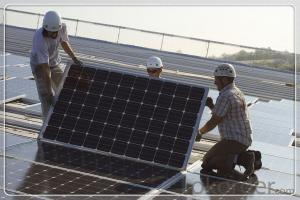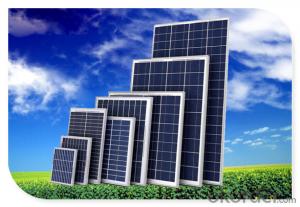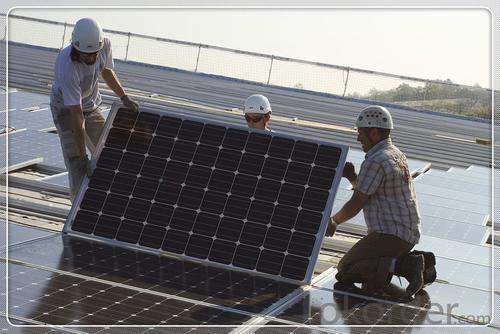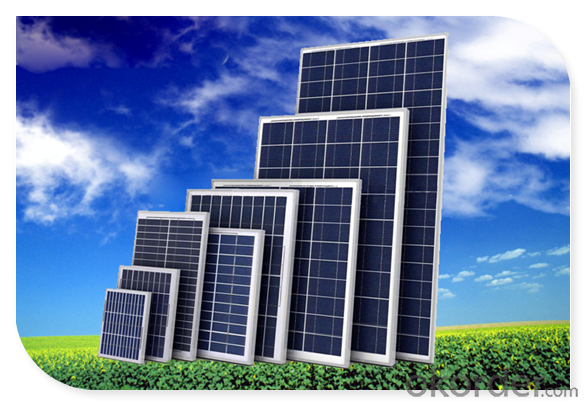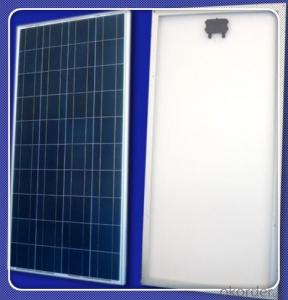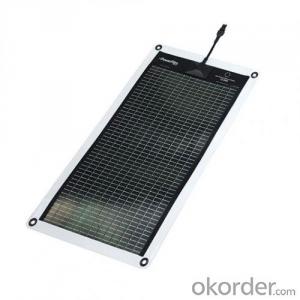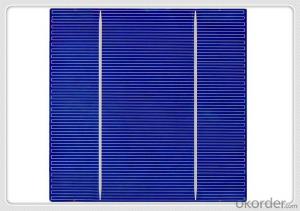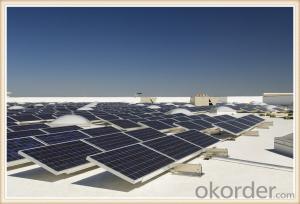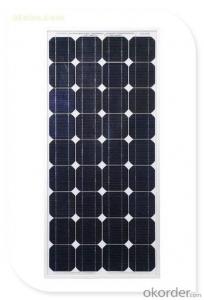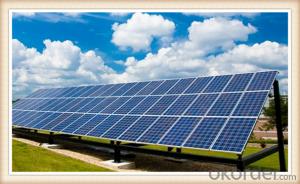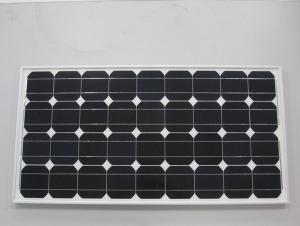80w Efficiency Solar Panels for Deer Feeders - 5-200w Chinese PV Panels
- Loading Port:
- China main port
- Payment Terms:
- TT OR LC
- Min Order Qty:
- 10000 watt
- Supply Capability:
- 100000 watt/month
OKorder Service Pledge
OKorder Financial Service
You Might Also Like
Specification
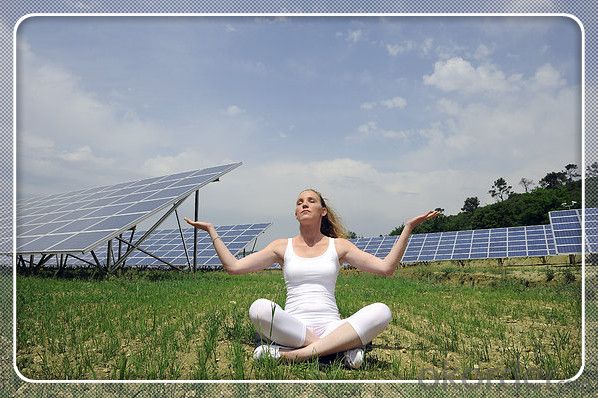
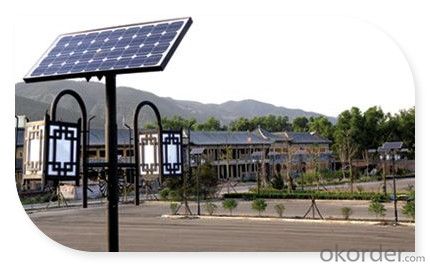
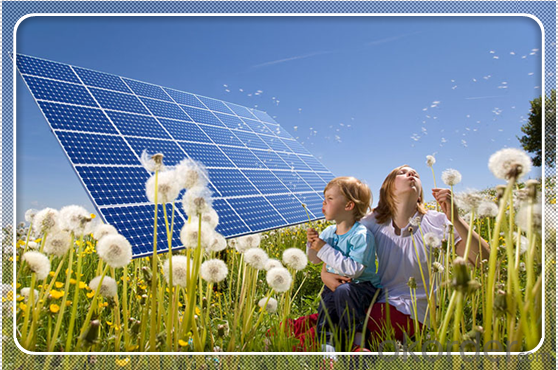
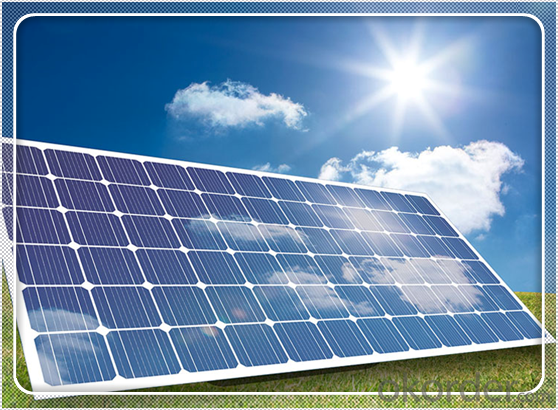
Solar Module Introduction
Solar Module is the core part of solar PV power systems, also is the highest value part of it. The function of Solar Module is to convert the sun's radiation to electrical energy, or transfer it to battery and store in it, or to drive the load running.
The Product has been widely used in space and ground, it mainly used for power generation systems, charging systems, road lighting and traffic signs areas. It could offer a wide range of power and voltage, and with high conversion efficiency, and long service life.
Solar modules use light energy (photons) from the sun to generate electricity through the photovoltaic effect. The majority of modules use wafer-based crystalline silicon cells or thin-film cells based on cadmium telluride or silicon. The structural (load carrying) member of a module can either be the top layer or the back layer. Cells must also be protected from mechanical damage and moisture. Most solar modules are rigid, but semi-flexible ones are available, based on thin-film cells. These early solar modules were first used in space in 1958.
Electrical connections are made in series to achieve a desired output voltage and/or in parallel to provide a desired current capability. The conducting wires that take the current off the modules may contain silver, copper or other non-magnetic conductive transition metals. The cells must be connected electrically to one another and to the rest of the system. Externally, popular terrestrial usage photovoltaic modules use MC3 (older) or MC4 connectors to facilitate easy weatherproof connections to the rest of the system.
Secification
Model Type | |
Peak Power-Pmax(W) | 5-200W |
Open Circuit Voltage-Voc(V) | 44.2 |
Maximum Power Voltage-Vmp(V) | 36 |
Short Circuit Current-Isc(A) | 5.4 |
Maximum Power Current-Imp(A) | 5 |
Maximum System Voltage | 1000V DC |
Maximum Series Fuse Rating | 10A |
Power Tolerance | -1~+3% |
Temperature Coefficients of Pmax | -0.45%/℃ |
Temperature Coefficients of Voc | -0.348%/℃ |
Temperature Coefficients of Isc | 0.031%/℃ |
Nominal Operating Cell Temperature | 44.5±2℃ |
Standard Testing Condition(STC) | Irradiance:1000W/m²;Temperature:25℃;AM=1.5 |
Qualification Test Parameters | |
Operating Temperature | -40℃~+85℃ |
Storage Temperature | -40℃~+85℃ |
Pressure Bearing | ≥5400Pascal/m² |
Wind Bearing | ≥5400Pascal/m² |
Mechanical Characteristics | |
Cell Size | Mono 125*125mm±0.5 |
No.of Cells | 72pcs(6*12) |
Dimension | 1580*808*40mm |
Weight | 15.5Kg |
Glass | 3.2mm High Transmission,Low Iron |
Frame | Anodized Aluminum Alloy |
Junction Box | IP65Rated |
Internal Diodes | 3 Bypass Diodes |
Cable | 1*4.0mm² Length 900mm |
Images
Packing & Shipping:
We have rich experience on how to pack the panels to make sure the safety on shipment when it arrives at the destination.
The normal size is packed by 25pcs/ carton / pallet. Paper carton for FCL shipping and wood carton for LCL shipping.
Warranty:
For c-Si panel: 25years output warranty for no less than 80% of performance, 10 years output warranty for no less than 90% of performance. Free from material and workmanship defects within 5 years.
For a-Si panel: 20 years output warranty for no less than 80% of performance, 10 years output warranty for no less than 90% of performance. Free from material and workmanship defects within 2 years.
FAQ:
(1)What price for each watt?
It depends on the quantity, delivery date and payment terms.
(2)What is your size for each module? Can you tell me the Parameter of your module?
We have different series of panels in different output, both c-Si and a-Si. Please take the specification sheet for your reference.
(3)Can you provide the peripheral products of the solar panels, such as the battery, controller, and inverter? If so, can you tell me how do they match each other?
Actually we are only manufacturer of solar panels, but we could try to source them for you in China if you need. We could provide you an optimal system design to instruct you how to install.
(4)Do you have the CE, TUV, UL Certification?
We’ve already passed all the tests, and any certificate is available.
(5)Have you ever sold your products to companies in my country?
Of course, we have customers in all general PV markets, but I think we should expand our market share along with the market growth.
(6)When did your company set up? You are a new company, how can I believe your quality?
We entered into Solar PV industry in 2005, now we have several plants in manufacturing of a-Si and c-Si panels, and our capacity is 220MW per year. Till now we have already passed all the tests by authorized laboratories, e.g. TUV, VDE, UL.
(7)Can you help us install the module if we cooperate with you?
We haven’t entered into installation sector, but we have the plan in near future.
(8) How do you pack your products?
We have rich experience on how to pack the panels to make sure the safety on shipment when it arrives at the destination.
(9) Can you do OEM for us?
Yes, we can.
(10)Can we visit your factory?
Surely, I will arrange the trip basing on your business schedule.
- Q: Solar panels which is the one produces the power...I wanna the complete description about it...
- What they consist of is little bitty silicon particles that transport the electricity through thermal conduction. The sun's rays activate it and create a circuit. The advantage of solar energy is that it's clean and renewable. At this point in time, though, it's inefficient because you only get about 0 to 5 percent output. Also, we don't have the technology right now to save solar energy and store it into batteries so it can be used at night.
- Q: Hey guys :)Well I'm in the middle of doing my PSHCE coursework on sustainable energy, focusing on solar panels. I just wanted to ask you what your opinions are of them? Are they really worth it? Are they sustainable? Will they reduce our energy bills? Those sort of questions :)If you are interested in installing solar panels, please mention that, as it would be great! There's lots of information about them on this site ----
- I have a boat in a sunny place and four 80 watt panels. These will run my fridge Tv and a few LED's. I still have to run my engine for hot water and washing machine. My Batteries only last a few years and are a real pain. I go on the mains when I can to get the batteries topped up. The panels are ok if there is nothing else, they are not the answer to the future of energy supply. There is also the moral aspect of the feed in tariff. For the rich to load their electricity bill onto the less well off is not acceptable and those panels on the roof tell all your neighbors that you are doing it. That will show a greedy selfish attitude. If they are any good why don't the power companies buy them and save buying coal?
- Q: Can solar panels be installed on concert venues or music festivals?
- Yes, solar panels can be installed on concert venues or music festivals. In fact, many event organizers are increasingly adopting solar energy to power their events, reducing their carbon footprint and promoting sustainability. Solar panels can be installed on rooftops, parking lots, or even as temporary structures to generate clean and renewable energy for the venue's electricity needs.
- Q: Do solar panels require direct sunlight to generate electricity?
- Yes, solar panels do require direct sunlight to generate electricity. While they can still generate some electricity on cloudy days or in indirect sunlight, their efficiency is significantly reduced without direct sunlight.
- Q: first of all, to be honest i have totally no idea on how a solar panel works.my task is to design something like a solar powered street lamp which store sun energy during day time and convert it into electrical energy then light energy so that the lamp can work during night time.any ideas on how to design the solar panel? which can store enough or more enegry in case there is no sunlight another day. and low cost as well :D
- solar panels are designed to charge 2v batteries, now depending on the power you need you can determine what kind to use there are many power ratings for the modules, for example if you want to charge two 2v batteries you can connect them in parallel, if you want to reduce the charging time you can use more than one module in parallel to increase the power.
- Q: Are solar panels safe for the environment?
- Yes, solar panels are safe for the environment. They generate electricity using sunlight, which is a renewable and clean energy source. Solar panels produce no greenhouse gas emissions, air pollution, or waste materials during operation. Additionally, they do not deplete natural resources, as sunlight is an abundant and infinite source of energy.
- Q: Hoping to find instruction, materials list and hardware needed to construct solar panels myself, how many and make it happen instead of talking about it
- Silica based solar cells are not the kind of thing you whomp up in you basement. Here are a couple ideas for solar systems you can build and install yourself. Take a 4 x 8 sheet of /2 inch plywood. Frame sides with 2 x 4's. Screw tin cans in a staggered row (checker board) pattern inside frame. The more cans the more heat you get so place them nearly touching. Paint cans and entire assembly flat black. Cover top with glass, plexiglass (best) or heavy mill clear plastic (cheapest)Place on roof. Drill 3-4 inch holes in opposing sides. Run pipe or tubing into house. Attach to small low speed fan. The black paint will absorb sunlight and heat. The air moving through box will carry heat into house. It's a cheap efficient way to help heat your home. You can vary size and shape of box to fit your roof. If you use more than one box, hook them up in series. More boxes mean more surface area means more heat. To heat water. Take a steel tank. A car gas tank works well. It is galvanized so it won't rust, is cheap, and easily available at any auto salvage yard. But you will have to flush in throughly to remove gasoline odor. A steel 55 gallon drum is easier to work with but may cost more. Paint exterior of tank flat black. Weld/glue/clamp water pipes to tank. Place on ground in area that gets lots of sunlight. Attach water supply to tank and route discharge pipe to house or appliance. Black painted steel absorbs heat from sun light and heats water. In spring and fall you get warm to hot water. In summer you get scalding hot water and in winter you get cold to luke warm water. Both of these solar powered systems are seasonal and their output varies according to location and climate, but they are very inexpensive and easy to build and provide FREE heat and/or hot water for many years with little or no maintainence.
- Q: I want to build a standalone wifi repeater -- powered by the sun. The problem is how much solar power and how big of a battery?net draw 4.5v @ 0.66A with loadnet draw 4.5v @ 0.60A no loadI'm assuming the best choice would be a 6v battery with a a couple diodes in series to induce ~.5v drop. Then, I need something to charge it -- I found 2v 6w solar chargers in the automotive section of Sears and 6v 2w solar chargers in the marine section of Dick's Sporting Goods.How many solar panels and what capacity batteries should I use? Is this the best method or should I use a voltage regulator and go with 2v batteries?I need this to be as cheap and simple as possible...
- You won't get very far with THAT lash-up. First of all.. WHY would you want to use diodes to drop the voltage.. they DRAW CURRENT and that is something you don't have to spare. That draw of (660 ma) comes out to just under 3 watts. You DO KNOW that you can get that 4.5 Volts by driving a NAIL into the THIRD CELL in a 6 Volt wet cell battery... right? and for what you are doing, you have more current available with a 6 volt battery than a 2 volt battery. Anyway, you could use two 6 Volt batteries and tap them at the 4.5 volt point then tie them in parallel, but you could still use the 6 volt solar panel to charge them. Trying to use an inverter is just an exercise in futility.. With TWO of the LARGEST DEEP CYCLE BATTERIES you can buy at AutoZone running in Parallel and being charged by solar panels.. if you hook a 75 watt inverter to them, they will go flat in about 4 hours of use during the night. This is not rocket science. Back when cars were changing over from 6 volts to 2 volts, I powered up more than one 6 volt car radio off a 2 volt battery... when you grow up as poor as I did.. you get inventive. I later used the same trick on the 24 volt electrical systems the Jeeps were using, to power up clandestine repeaters in places where no repeaters should have been. About 25 years ago I was living in the Denver area and built up a 0 watt 2 meter repeater on a split channel and took it up to Mt. Evans during the summer and hid it in a pile of rocks. I used tone control, so we were the only ones using it and, as I said, It was a split channel.. so it wasn't on a regular repeater channel. That thing was still running when I moved from the Denver area about 3 years later and for all I know, It's still up there on Mt. Evans (find the Brittlecone Pines and look towards that small peak about a mile to the west)
- Q: Can solar panels work at night?
- No, solar panels cannot generate electricity at night as they rely on sunlight to produce power.
- Q: Can solar panels be installed in areas with high levels of saltwater exposure?
- Yes, solar panels can be installed in areas with high levels of saltwater exposure. However, it is important to choose solar panels that are specifically designed to withstand such conditions. These panels are typically made with corrosion-resistant materials and undergo rigorous testing to ensure durability in marine environments. Regular maintenance and cleaning may also be required to prevent salt buildup and optimize performance.
Send your message to us
80w Efficiency Solar Panels for Deer Feeders - 5-200w Chinese PV Panels
- Loading Port:
- China main port
- Payment Terms:
- TT OR LC
- Min Order Qty:
- 10000 watt
- Supply Capability:
- 100000 watt/month
OKorder Service Pledge
OKorder Financial Service
Similar products
Hot products
Hot Searches
Related keywords
